目次
- 1 Trump Tariffs July 9 Deadline: Japan Faces 24% Impact
- 1.1 Trump Administration’s Reciprocal Tariff Policy – Embodiment of “America First”
- 1.2 Ryosei Akazawa, Minister for Economic Revitalization – Prime Minister Ishiba’s “Left Arm” Tackles National Crisis
- 1.3 Impact on Japan – Widespread Concerns Centered on Auto Industry
- 1.4 Other Countries’ Negotiation Status – Maneuvering as Deadline Approaches
- 1.5 Possibility of Deadline Extension and New Threat of “Retaliation Tax”
- 1.6 President Trump’s True Intentions and Negotiation Focus
- 1.7 “Boomerang Effect” and Impact on Global Economy
- 1.8 Japanese Corporate Response Strategies – Short and Long-term Approaches
- 1.9 Japanese Government Response and Challenges
- 1.10 Conclusion – Strategic Response Key Amid Uncertainty
- 1.11 Related Articles
Trump Tariffs July 9 Deadline: Japan Faces 24% Impact
At 12:01 AM Eastern Time on July 9, 2025, the 90-day suspension period for reciprocal tariffs announced by the Trump administration will expire. Japan faces a 24% tariff, with the automotive industry expected to suffer losses reaching hundreds of billions of yen annually. Economic Revitalization Minister Ryosei Akazawa has extended his stay in the US to continue negotiations, but significant gaps remain between Japanese and American positions, making progress difficult. This article provides a comprehensive analysis of the Trump administration’s tariff policies, challenges facing Japanese companies, and future prospects based on the latest information.
Trump Administration’s Reciprocal Tariff Policy – Embodiment of “America First”
What Are Reciprocal Tariffs?
The “reciprocal tariffs” announced by the Trump administration on April 3, 2025, are additional tariff measures that raise US tariffs to match those imposed by trading partners when they apply high tariffs or non-tariff barriers. While this policy has faced widespread criticism regarding its validity, President Trump insists on achieving “fair trade.”
Tariff rates are generally calculated based on “trade deficit ÷ imports ÷ 2,” resulting in higher tariffs on East and Southeast Asian countries with large trade surpluses with the US. The reciprocal tariffs are expected to cover approximately 70% of total US imports (excluding Mexico and Canada).
Legal Foundation – Utilizing the International Emergency Economic Powers Act (IEEPA)
The legal basis for this policy is the International Emergency Economic Powers Act of 1977 (IEEPA). IEEPA allows the President to exercise trade regulation powers when declaring an “unusual and extraordinary threat” to national security, foreign policy, or the economy. President Trump has utilized this to justify tariff measures citing the following reasons:
- Unfair trade practices are weakening the US economy
- Need to maintain domestic manufacturing capacity in advanced industries like automobiles and shipbuilding
- Correcting excessive imports and reducing US imports while increasing exports
- Trading partners artificially suppressing wages and consumption
- Blocking illegal immigration and drug trafficking including fentanyl (for Canada and Mexico)
However, the US Court of International Trade (CIT) has ruled various IEEPA-based additional tariffs as “illegal,” creating judicial obstacles. Multiple state governments including California have filed similar lawsuits, making the legal foundation of the tariff policy far from solid.
Timeline of Trump’s Tariff Policies – Escalating Trade War
The progression of tariff policies from January to June 2025 shows gradual escalation:
January 20, 2025: Trump inauguration. Tariffs postponed on day one, but investigation of US-China trade agreement compliance ordered. TikTok ban postponed 75 days. February 2: Executive order signed imposing 10% additional tariffs on Chinese imports (effective February 4). China retaliates with tariffs on coal and LNG. March 4: 25% tariffs on Mexico and Canada take effect. China tariffs increased by another 10% to total 20%. China retaliates with tariffs on US agricultural products. March 12: 25% tariffs imposed on steel and aluminum imports from all countries including China and Japan (separate from reciprocal tariffs). April 3: Reciprocal tariffs announced for countries worldwide. Japan 24%, China 34%, India 26%, South Korea 25%, EU 20%, Vietnam 46%, etc. April 9: Second round of reciprocal tariffs implemented. China tariffs increased by 50% to total 104%. China counters by raising tariffs on all US imports to 84%. April 10: China tariffs raised to 125% (145% including existing 20%). Second round reciprocal tariffs (portion exceeding 10%) suspended for 90 days for all countries except China. Deadline: July 9 at 12:01 AM. April 11: 20 electronic items including smartphones and computers exempted from China reciprocal tariffs.Ryosei Akazawa, Minister for Economic Revitalization – Prime Minister Ishiba’s “Left Arm” Tackles National Crisis
Exceptional Appointment and Heavy Responsibility
Ryosei Akazawa, born in 1960 and now 64 years old, graduated from the University of Tokyo Faculty of Law before joining the former Ministry of Transport (now Ministry of Land, Infrastructure, Transport and Tourism). First elected to the House of Representatives in 2005, he is currently serving his seventh term. Known as Prime Minister Shigeru Ishiba’s closest confidant, Akazawa himself refers to Ishiba as “Ishiba-san’s left arm” and openly states his “hobby is Shigeru Ishiba.” Ishiba has said “I can’t quit cigarettes or Akazawa,” showing complete trust in him.
In last year’s Liberal Democratic Party presidential election, he served as secretary-general of the Ishiba camp, contributing to Ishiba’s ascension to party president. Known for being extremely serious and detail-oriented, he once served as a gatekeeper in what was called the “Akazawa Room” at the Prime Minister’s Office, reviewing requests from Kasumigaseki and determining what would interest Ishiba or require further investigation.
His current responsibilities span economic revitalization, new capitalism, wage increases, startups, comprehensive social security reform, infectious disease crisis management, disaster prevention agency establishment preparation, and serving as Minister of State for Special Missions (Economic and Fiscal Policy).
Lack of Diplomatic Experience and Background of Negotiator Selection
While he has some experience with Japan-US aviation negotiations during his time at the Ministry of Transport’s International Aviation Division, he has no cabinet experience as a legislator and no prior experience representing the government in diplomatic negotiations. Within the LDP, Chief Cabinet Secretary Yoshimasa Hayashi (fluent in English, extensive overseas experience) and former Secretary-General Toshimitsu Motegi (fluent in English, well-versed in economic and industrial affairs, called a “tough negotiator” by Trump during 2019 Japan-US Free Trade Agreement negotiations) were considered strong candidates.
However, the strong trust relationship between Prime Minister Ishiba and Akazawa was ultimately cited as the main reason for his selection. Akazawa himself reportedly showed initial reluctance about the negotiator appointment but told those close to him, “I want to overcome this national crisis somehow. It’s a tremendous responsibility, but I’ll do my best.”
Negotiation Progress and Difficult Discussions
The main timeline of Minister Akazawa’s US visit and negotiations:
April 16-18: Visited US and met with President Trump at the White House. This was exceptional for a cabinet member and reported as only the third Japanese person to meet in the Oval Office after the Prime Minister and Shohei Ohtani. June 16: Japan-US summit during G7. However, the meeting lasted only 30 minutes, with agreement on tariffs limited to “continued consultations.” Prime Minister Ishiba stated, “Our mutual understanding has not aligned.” June 27: Met with Commerce Secretary Ratnick for about 65 minutes in Washington. Japan announced “fruitful discussions” on trade expansion, non-tariff measures, and economic security cooperation. June 28: Two phone consultations with Commerce Secretary Ratnick (about 15 minutes at night, about 20 minutes on morning of 29th). June 29: Extended stay beyond original return date to seek further discussions with Treasury Secretary Bessent, but meeting did not materialize. June 30: Scheduled to return to Japan.The negotiations have focused on reducing (eliminating) the 25% additional tariff on imported automobiles. Japan argues that automotive-related investments in the US exceed $60 billion (about 9 trillion yen) and create 2.3 million jobs, making the 25% auto tariff unacceptable.
However, the gap between Japanese and American positions on auto tariffs remains large, making negotiations difficult. Direct discussions with Treasury Secretary Bessent did not materialize, leading to harsh online criticism calling the negotiations “ignored” and “fruitless.”
Impact on Japan – Widespread Concerns Centered on Auto Industry
Severe Impact on Auto Industry
Trump administration tariff policies are expected to pose particularly severe challenges to Japan’s auto industry. With about half (48.6%) of the US new car market consisting of imports and Japanese imports accounting for 17% (2024 data), the tariff impact would be substantial. According to the US International Trade Commission’s 2024 report, 25% tariffs on non-North American imports would reduce auto imports by 73.9% and increase average US auto prices by 5%.
Specific impacts include:
1. Reduced Export Revenue and Price Competitiveness- Significant reduction in US exports, with impact expected to reach hundreds of billions of yen annually
- Higher prices for Japanese cars in the US market, creating competitive disadvantage against other manufacturers
- Consumers likely to switch to US domestic products or other manufacturers’ products due to price increases
- Auto industry supports millions of jobs domestically in Japan
- In Aichi Prefecture, about 20% of prefectural employment is related to the auto industry, with reduced Toyota domestic production directly leading to deteriorating management at parts manufacturers and suppliers
- Cities like Ota City in Gunma Prefecture, where auto-related factories are major employment sources, would be similarly affected
- Impact extends beyond automakers to small and medium parts suppliers, logistics companies, and various other industries
- Trump administration policies encourage US domestic production, forcing Japanese automakers to restructure parts supply systems
- Risk of increased parts transportation costs and reduced global supply chain efficiency
- Supply chain changes affect product quality and development speed, potentially causing significant cost increases and extended development periods
- Ultimately affects vehicle prices consumers pay, potentially squeezing manufacturer profits
Impact Varies by Manufacturer
Impact varies based on Japanese automakers’ US production ratios and “earning power”:
- Mitsubishi Motors: Most affected as it relies entirely on imports
- Toyota and Honda: Relatively less affected due to high US production ratios
- Mazda: US exports performing well in 2025
- Nissan: US exports struggling
While tariff costs may ultimately be passed to consumers through price increases, President Trump has criticized price increases based on tariffs as “undesirable,” and Toyota reportedly plans to avoid price increases for now. Major automakers have the capacity to absorb tariffs themselves, potentially avoiding deflationary pressure domestically by waiting for US economic re-expansion before gradually implementing price increases.
Impact Beyond Auto Industry
Reciprocal tariff targets also include:
- Sake: Designated as reciprocal tariff item
- Beef: May fall outside low-tariff quota as Japan-US Trade Agreement quota for 2025 reaches limit
- Chemicals: Designated as reciprocal tariff item
- Primary metals industry: Affected by reduced intermediate goods exports
- Information and communications equipment industry: Impact through supply chains
- Wholesale and retail trade: Sensitive to trade trends and easily affected
- Food processing industry: Projected 0.6% decline
Other Countries’ Negotiation Status – Maneuvering as Deadline Approaches
As the July 9 deadline approaches, other countries are also struggling to respond. Major countries’ situations:
China – Harshest Tariffs and Retaliation
China already faces 125% tariffs (145% including existing 20%), showing a stance of not retaliating as further tariff increases would be practically meaningless. However, it has implemented rare earth export restrictions affecting US auto production. In June 2025, at trade consultations in London, it was announced that China would lift rare earth export restrictions in exchange for the US easing some export restrictions and accepting Chinese students.
The US’s reluctance to engage in Japan negotiations stems from devoting enormous energy to China trade negotiations (especially the rare earth issue).
India – Facing 26% Tariffs
India’s trade negotiation team is also extending its Washington stay, aiming for agreement before the July 9 deadline in bilateral trade agreement (BTA) negotiations with the US. According to Indian media, India wanted zero tariffs on auto parts and other key industries, but negotiations have stalled as the US refused.
However, US-India trade negotiations are progressing positively, with Treasury Secretary Bessent stating India might be the first announced trade agreement. The IMF and World Bank have downgraded India’s 2025 economic growth forecasts, citing reduced global trade due to US tariff policies as a downside factor.
South Korea – 25% Tariffs with Possible Continued Negotiations
South Korea faces 25% reciprocal tariffs, higher than Japan. While April’s initial consultations agreed to conclude an agreement by July, Trade Minister Yeo Han-koo stated “not bound by July deadline,” suggesting negotiations may continue beyond the deadline.
Vietnam – Facing High 46% Tariffs
Vietnam faces 46% reciprocal tariffs, nearly double Japan’s, but Prime Minister Pham Minh Chinh expressed confidence saying he “expects results within two weeks” and that Vietnam and the US share deep understanding on tariffs.
EU and UK – Relatively Low Tariff Rates
The EU faces 20% and UK 10%, relatively low compared to Asian countries. This likely reflects the scale of trade surpluses with the US.
Possibility of Deadline Extension and New Threat of “Retaliation Tax”
Fate of July 9 Deadline
Treasury Secretary Bessent has suggested extending the July 9 deadline to September 1 to continue consultations. He stated that negotiations could be concluded by September 1 if agreements are reached with 10-12 of 18 major trading partners.
However, President Trump stated at a June 27 press conference that “there’s no need to extend the deadline,” adding “we can extend or shorten it. I want to shorten it,” emphasizing that negotiating leverage remains with the US. He has also repeatedly suggested sending “letters” unilaterally setting tariff rates to partner countries within the next week and a half to two weeks.
White House Press Secretary Leavitt also mentioned that the July 9 deadline is “not absolute,” referencing the possibility of extension, but stated that deals setting “reciprocal tariff rates favorable to the US” could be offered to countries unable to reach agreements.
The US Chamber of Commerce predicts that additional tariff rates will be higher than current levels over the next six months, though not as high as the reciprocal tariff rates announced in April. As of late June, only the UK has reached an agreement within the deadline.
New “Retaliation Tax” Bill
As the tariff suspension deadline approaches, a new Trump administration bill called the “retaliation tax” is causing ripples. Included in the Trump administration’s “big beautiful bill,” it would impose an annual 5% tax (with cap) on revenues earned in the US by companies and investors from countries the US deems to have unfair tax systems.
The US opposes the international corporate tax framework starting next fiscal year in Japan, and Japanese companies may be subject to this additional tax. Treasury Secretary Bessent posted on social media that he requested Congress to “remove the retaliation tax from the big beautiful bill” after the G7 excluded the US from the corporate tax framework the US opposes.
President Trump’s True Intentions and Negotiation Focus
Dissatisfaction with Auto Trade
President Trump has repeatedly expressed dissatisfaction that auto trade with Japan is unfair. He claims it’s “not fair” that the US imports many cars from Japan while US exports to Japan are limited. He believes Japan should increase purchases of US energy resources (oil, Alaska LNG, etc.) and other products to reduce the trade deficit.
Alaska LNG is noted as potentially becoming a “super political issue” surpassing US Steel. Trump has indicated he could notify Japan via letter that auto tariffs would be 25%, showing no intention of easy concessions.
Policy Uncertainty and “Wandering”
Trump administration tariff policies are sometimes evaluated as “continuing to wander,” being temporarily suspended out of consideration for financial market stability or reduced after rounds of retaliatory measures. Policies are difficult to predict and often announced suddenly on social media, requiring companies to analyze individual policies from perspectives of “feasibility,” “time until impact,” and “duration of impact” to formulate responses.
“Boomerang Effect” and Impact on Global Economy
Greatest Impact on the US Itself
Protectionist trade policies are noted to produce a “boomerang effect,” not achieving intended results and causing the greatest impact on the implementing country, the US. Rising import prices due to tariffs trigger deteriorating economic activity, ultimately expected to reduce exports from Japan and domestic production.
The overall impact on Japan’s real GDP is expected to be a maximum decline of about 1.4%. For specific industries, the auto industry is projected to decline 1.7% and food processing 0.6%, experiencing significant negative impacts.
Risk of Stagflation
If tariff increases are implemented as scheduled on July 9 and coincide with oil price spikes due to US military intervention, concerns arise about the global economy falling into stagflation (coexistence of recession and inflation). While short-term effects create deflationary pressure through急減 demand and oversupply, medium to long-term supply chain restructuring based on economic rationality is expected to push up global manufacturing costs.
WTO Dysfunction
Trump administration tariff policies have created tension in Japan-US trade relations and caused WTO (World Trade Organization) dysfunction. While solutions should be sought based on international rules at the WTO, arbitration functions are not working adequately due to US disregard for the WTO and internal organizational conflicts.
The US, dissatisfied that Appellate Body decisions become de facto precedents expanding agreement interpretations, continues refusing to appoint members. WTO dispute resolution has become prolonged and effectively paralyzed.
Japanese Corporate Response Strategies – Short and Long-term Approaches
Short-term Response Strategies
1. Strengthening Information Collection and Analysis- Partner with US lobbying firms, law firms, and consulting companies for accurate and timely information
- Gather information through US industry associations
- Identify supply chain bottlenecks and conduct post-implementation simulations
- Actively provide input through public comments and hearings
- Advocacy activities through industry associations
- Actively engage in lobbying regarding unreasonable aspects
- Decide whether to pass tariff costs through pricing or compress profits
- Consider maintaining prices through inventory utilization
- Consider price pass-through for perishables that cannot be held as inventory
- Continuously request tariff exemptions based on USJTA (US-Japan Trade Agreement)
- Strengthen negotiations through agricultural tariff concessions and energy sector cooperation
Long-term Response Strategies
1. Market Diversification and Geographic Dispersion- Avoid excessive dependence on US market, expand local production bases in emerging markets like Asia (India, Indonesia), Middle East, Africa
- Provide vehicles suited to local needs, create local employment
- Explore multilateral response strategies in cooperation with major exporting countries like Germany and South Korea
- Accelerate R&D for next-generation vehicles like EVs, autonomous driving technology, hydrogen fuel cell vehicles
- Accelerate development of autonomous and connected cars to improve competitiveness in next-generation mobility markets
- Strengthen investments in growth industries like renewable energy, AI, biotechnology
- Form industrial clusters leveraging regional characteristics
- Achieve geographic dispersion of production, procurement, and sales to improve supply chain flexibility
- Build systems enabling rapid production location changes while maintaining multiple production bases
- Promote supply chain decoupling, such as using Chinese parts for China domestic market while avoiding Chinese products for US-bound products
- Review China→Mexico→US supply chains
- Toyota, Panasonic Energy, Honda making major US investments
- Japan maintains first place for 16 consecutive years in US manufacturing job creation
- Respond to Trump administration’s “encourage US domestic production” policy
- Expand vocational training programs in preparation for auto industry job losses
- Skill enhancement support for middle-aged and elderly workers
- Facilitate smooth transition to new industries
- Measures to minimize impact on regional economies
Japanese Government Response and Challenges
Current Negotiation Strategy
The Japanese government is pursuing negotiations while refraining from retaliatory measures, even as China and the EU suggest countermeasures. However, the Japan-US summit during the G7 lasted only 30 minutes, with agreement on tariffs limited to “continued consultations.” Prime Minister Ishiba stated “our mutual understanding has not aligned,” illustrating negotiation difficulties.
The government’s mission includes supporting price pass-through for SMEs and monitoring transactions that impede it. Concerns also exist about impacts on farmers, the LDP’s support base, with consideration of strengthening negotiations through agricultural tariff concessions and energy sector cooperation.
Impact on Upper House Elections
If negotiation results emerge around the Upper House elections expected on July 20, it becomes very important for the Ishiba administration. Unfavorable conditions for the ruling party could amplify negative effects on Japan’s stock market. Nomura Securities assumes a scenario where auto tariffs remain at 25%, considering the impact on corporate earnings in Japanese stock outlooks as neutral in this case.
Conclusion – Strategic Response Key Amid Uncertainty
Trump administration reciprocal tariff policies are likely to have long-term effects on Japan’s economy, particularly the auto industry. As the July 9 deadline approaches, Minister Akazawa’s negotiations face difficulties with large gaps between Japanese and American positions.
For companies, avoiding excessive dependence on specific countries and achieving geographic dispersion of production, procurement, and sales is essential in this highly uncertain business environment. With high policy uncertainty, Japanese companies need cycles of accurate and timely information gathering, analysis of impacts on their supply chains, and formulation of loss minimization strategies.
Japan must effectively utilize bilateral agreements (like USJTA) and WTO frameworks while building cooperative relationships with the US. Simultaneously, long-term promotion of domestic technological innovation, multilateralization of supply systems, and cultivation of new industries to strengthen overall economic competitiveness is required.
While Trump administration protectionist policies present various challenges to Japanese companies, this could also serve as an opportunity for industrial structure transformation and strengthening international competitiveness, potentially leading to sustainable growth of Japan’s economy. In this era of uncertainty, flexible and strategic responses are particularly crucial.
Related Articles
- US Economy 2025: Trump Tariffs’ Impact on Japan
- Trump Tariffs and Middle East Crisis: Central Bank Response
- Trump Tariffs 2025: Global Impact Analysis
- US 24% Tariff Impact on Japan
Reference Sites: JETRO | Mizuho Bank | TRADE.JP | Nomura Research Institute
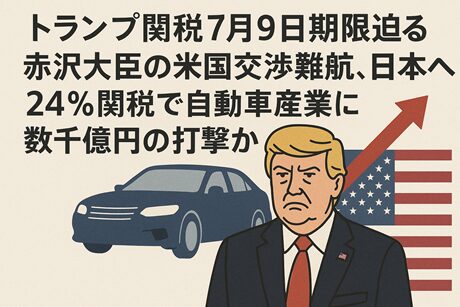
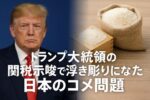
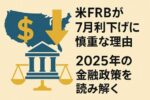
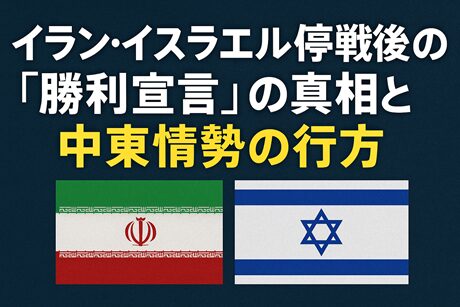
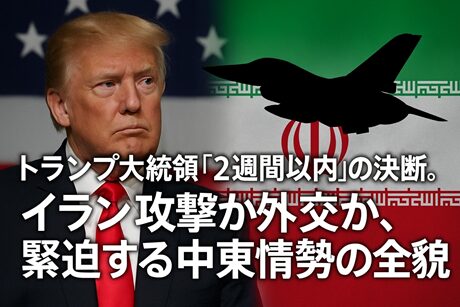

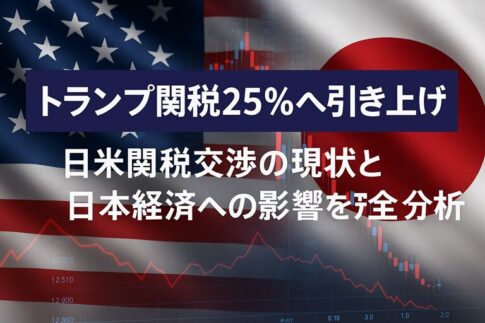
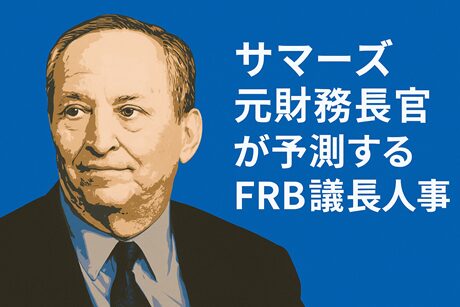
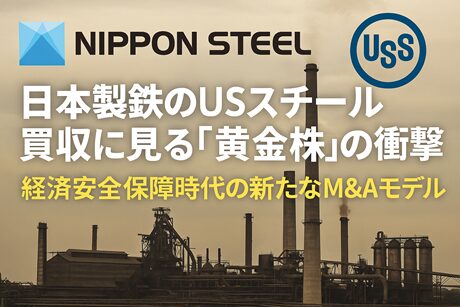
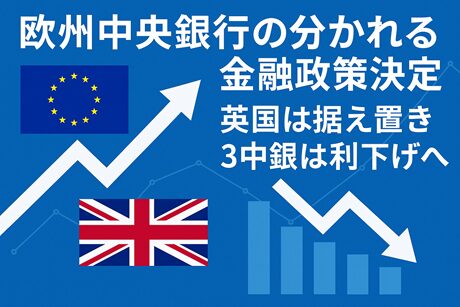
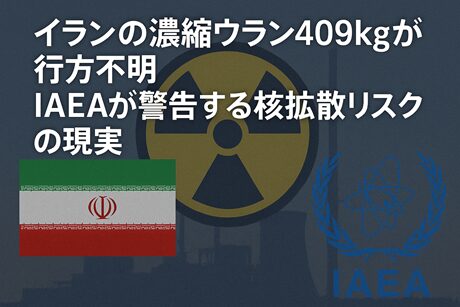

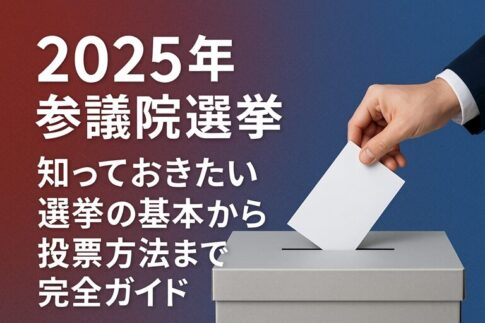
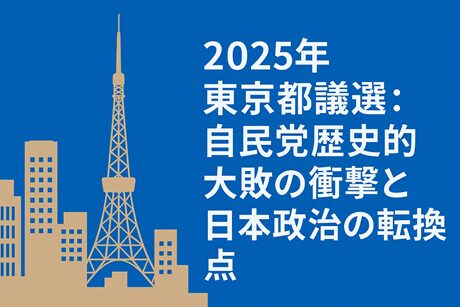



Leave a Reply